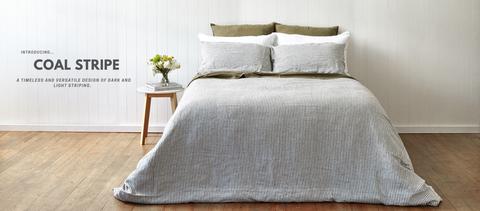Why Linen is More Expensive than Cotton
Posted on 12 October 2017
Throughout history linen has been the choice fabric amongst pharaohs, medieval royalty and the upper echelons of European society. Whilst superior qualities such as strength, durability and softness made linen a choice fabric over the ages, its association with aristocracy is in fact not the reason linen is more expensive than cotton.
To put it simply, manufacturing linen is a laborious and timely process, from harvesting in the fields to fabric construction on the factory floor. Add geographical limitations of where the linen producing flax plant will grow and the result is a more costly purchase than the more easily produced cotton fabric.
HARVESTING:
From sowing the seed to harvest takes about 90 days. Flax plants must be pulled from the ground intact rather than cut in order to preserve the full length of the fibre. The tapered ends of the stalk must be preserved so that a smooth yarn may be spun. After being harvested the fibers must then be loosened from the stalk. This is achieved by exposing the plants to moisture, so that bacteria and fungi can facilitate the removal of the fibre from the woody tissue by partial rotting. This time consuming process is known as retting and takes place either in the field or in specially built tanks or pools.

The next step is the scutching process which involves separating the raw materials such as straw and the broken down woody portion from the flax fibres. This is achieved by crushing them between industrial metal rollers, so that the parts of the stalk can be separated.

The hackling step is the final process and separates the shorter fibres from the long soft flax fibres. Hackling is achieved by running the flax through hackling combs after which the flax is then suitable for weaving into linen.

WEAVING:
Linen fiber is inelastic and easy to break in the production process, so great care must be taken when spinning and weaving. As a result, these machines have to run at lower speeds, giving lesser yields and increasing costs.


GEOGRAPHY:
Flax is the world’s only natural fibre grown and harvested in Western Europe, where climate and soil conditions are optimal. European production of flax occurs predominantly through the ‘Flax Belt’ covering parts of France through to The Netherlands. European production and labor contribute to the costly production of linen.
As you can see, from harvest to home, a great deal of resources, time and labour are required to produce the sheets we sleep on each night, without barely a thought given to the constraints, limitations and conditions which dictate the production yield. Producing linen is more intensive than producing cotton, ultimately reflecting in a more expensive purchase over the counter.


